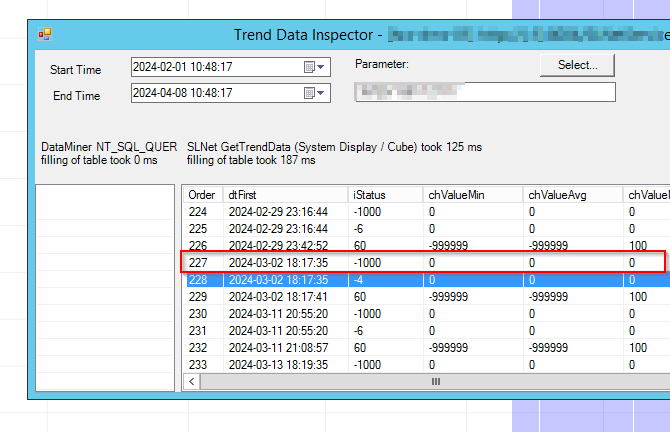Dojo,
What does the iStatus value of '-1000' mean for a trending record ?

As far as I know, the -1000 entry is an extra entry added as a gap start marker. It gets added by SLNet in an extra processing step on the raw trend data, when it is handling a GetTrendData request which has its "Raw" field equal to false. I hope this already helps a bit.
Hi Ciprian, The -1000 status value is indeed not present in the trend data database tables. As you saw in the documentation, these tables may contain records with (other) negative iStatus values, each signifying a distinct type of disruption in the normal trending behavior. However, when trend data is fetched using a GetTrendDataMessage — Cube utilizes this message for retrieving trend data for graphical displays — an additional processing layer is applied to the database records while composing the TrendDataResponseMessage. During this process, a -1000 entry is systematically inserted before any sequence of negative status records in the database. In the context of Cube’s graphical visualization, the -1000 status acts as an indicator, marking the commencement of a gap within the trend data. I don’t think this -1000 entry has an other purpose than for this Cube visualisation. If you need more help on these negative trend data status values, I suggest contacting one of the backend developers in the data core domain for more info or details.
Hi Veerle, thank you for your answer. Could you please clarify the circumstances under which this SLNet behavior (i.e., the “extra processing step on the raw trend data”) typically occurs on a healthy agent? I tried to find more information in our docs (https://docs.dataminer.services/user-guide/Advanced_Functionality/Databases/Optional_database_configurations/Offload_database/Structure_of_the_offload_database.html?q=istatus#istatus-values) about this iStatus value but without success. Thanks again!